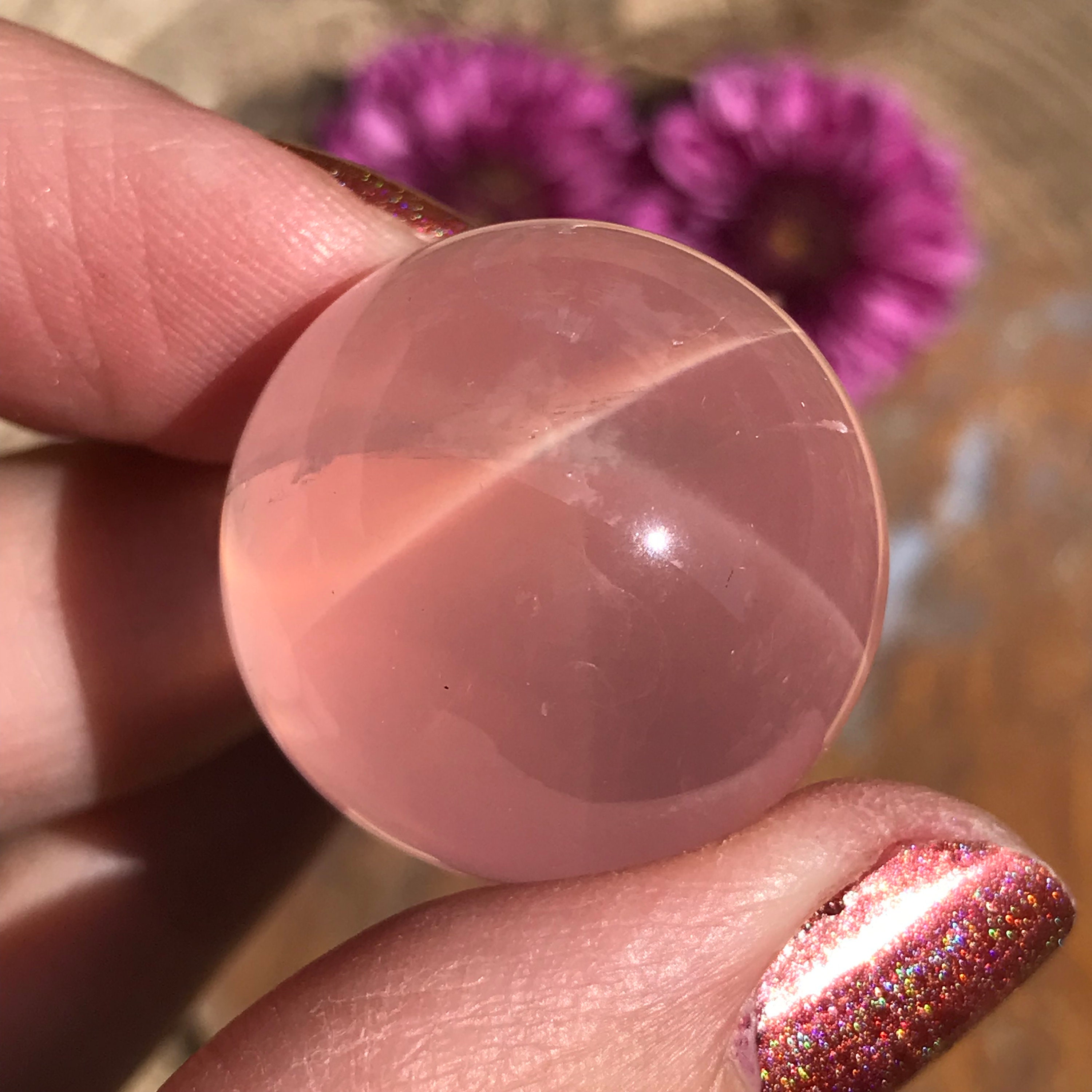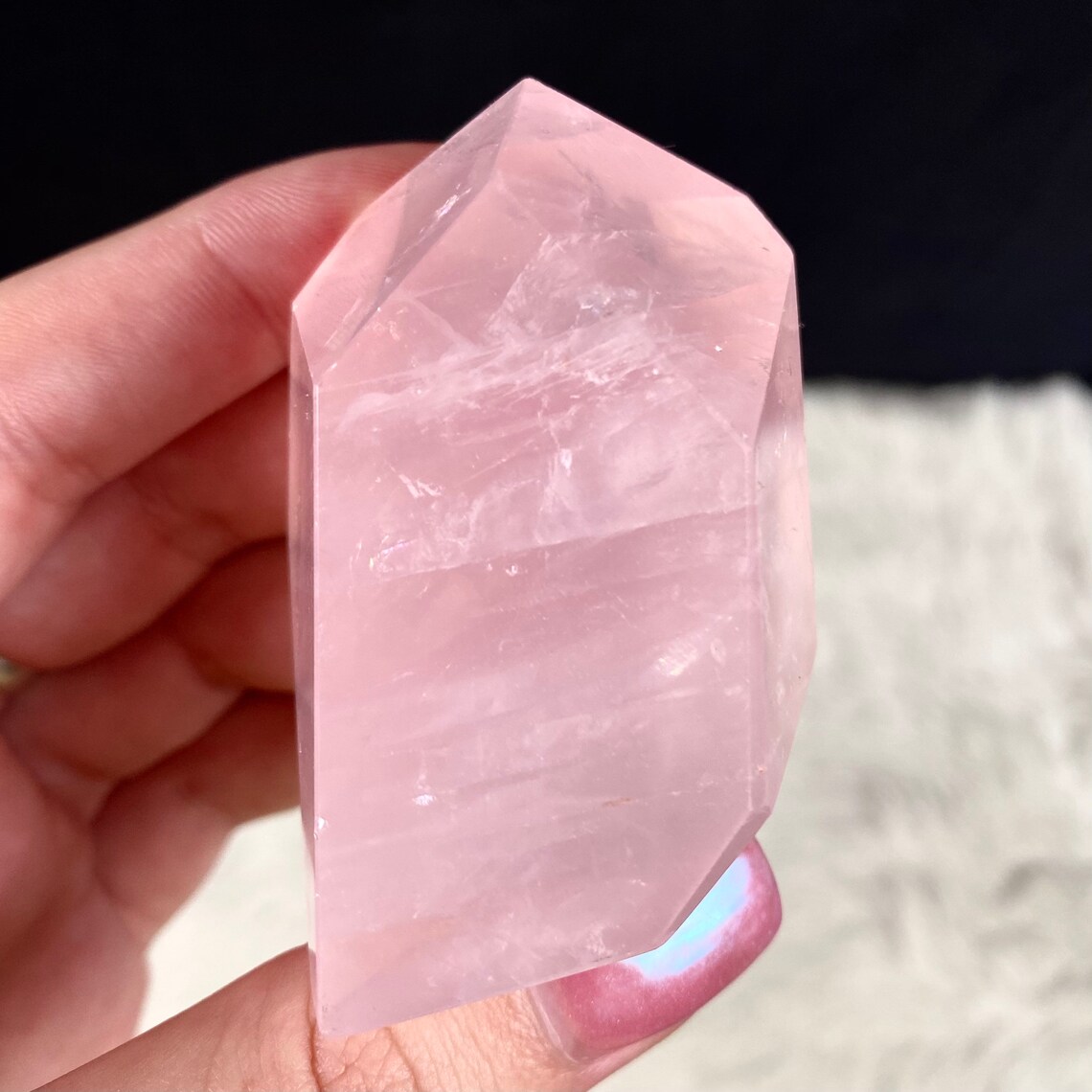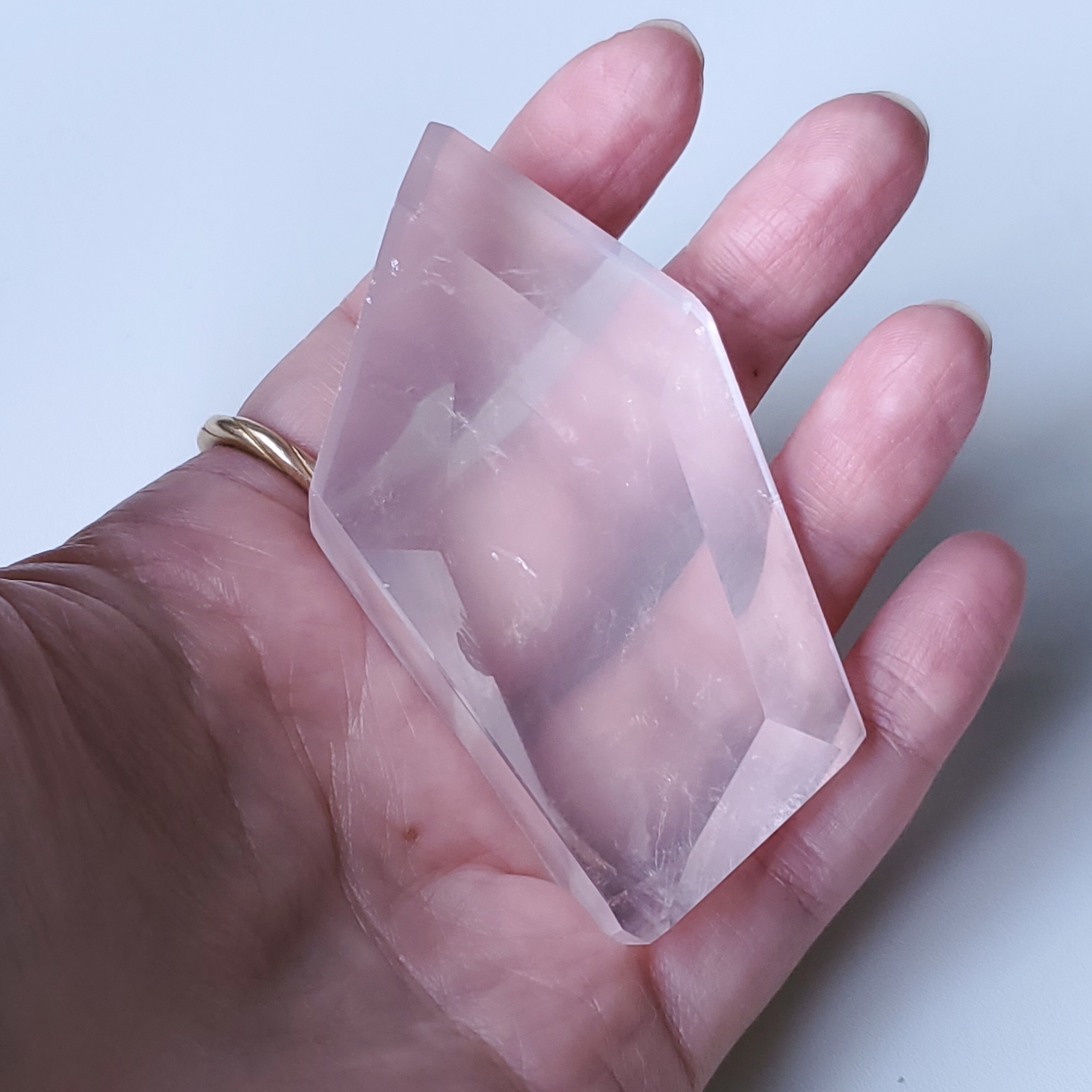

Rose quartz is sometimes treated with radiation to enhance and intensify its pink color, but in general, specimens on the market are in their natural form.

Morganite has excellent transparency and luster whereas rose quartz is almost always milky or hazy.Here are some fundamental differences between rose quartz and morganite:

Morganite is a much more valuable gemstone than rose quartz. While they are generally easy to tell apart, some shoppers are confused by the similarity of these gemstones, especially when in rough form. Morganite and rose quartz are very similar in terms of color. Rose quartz can also be cut into numerous gemstone shapes, including more uncommon shapes such as Asscher, emerald, the rose cut and so on, although this is much less commonly done and often only with more transparent varieties. These are commonly cut en cabochon which enhances its smooth, lustrous surface. Rose quartz occurs in large formations in nature, which means that large-sized gemstones can be fashioned out of the rough. Rose quartz can sometimes contain rutile inclusions which can cause the stone to exhibit the highly desirable asterism effect, also known as the star effect. This is a feature that reduces the value of the gemstone and a step-behind other major pink gemstones such as kunzite, morganite and tourmaline. Rose quartz is often translucent, displaying a milky, turbid appearance. It’s believed that rose quartz gets its color from traces of titanium, manganese or iron present during the stone’s formation. See this beautifully designed pendant here. Rose quartz is known for its delicate, feminine shades of pink.
#Mozambique rose quartz how to#
How to Match Earrings to Your Hairstyle.WHAT JEWELRY TO WEAR WITH YOUR WEDDING DRESS.ENGAGEMENT RINGS, WEDDING RINGS AND WEDDING BAND.


 0 kommentar(er)
0 kommentar(er)
